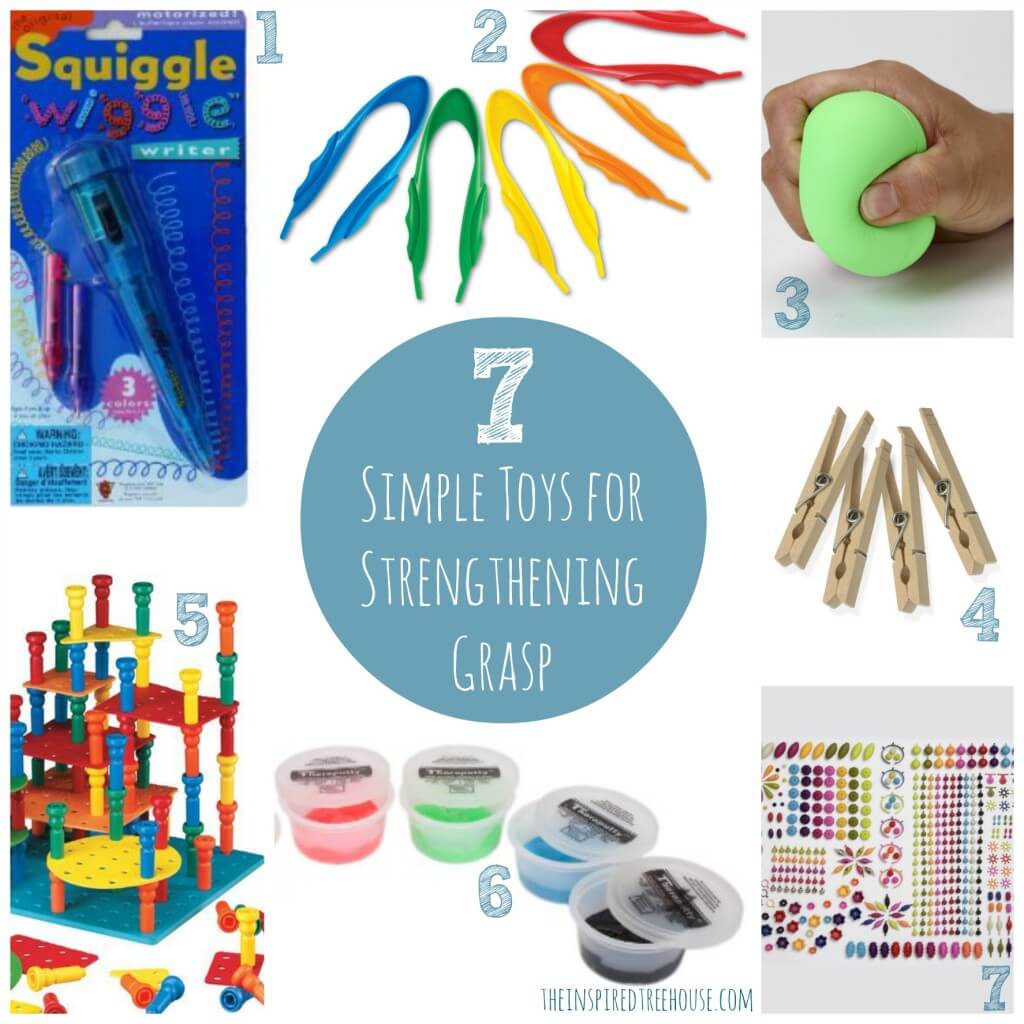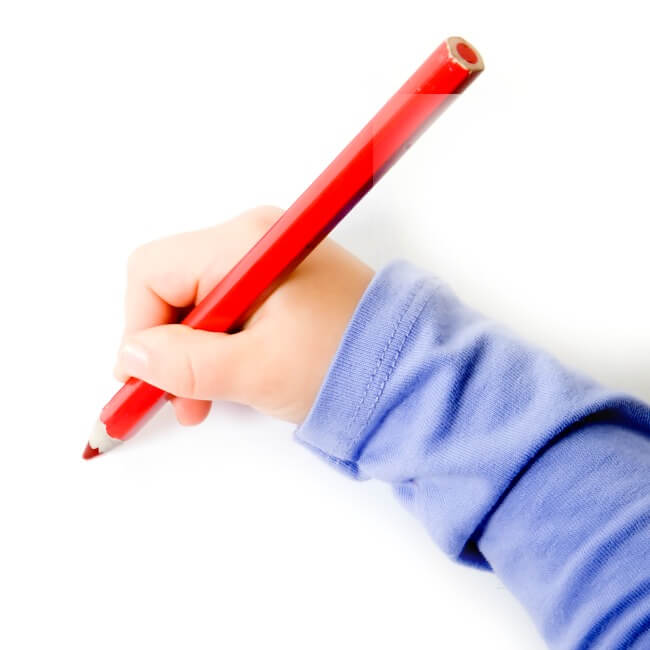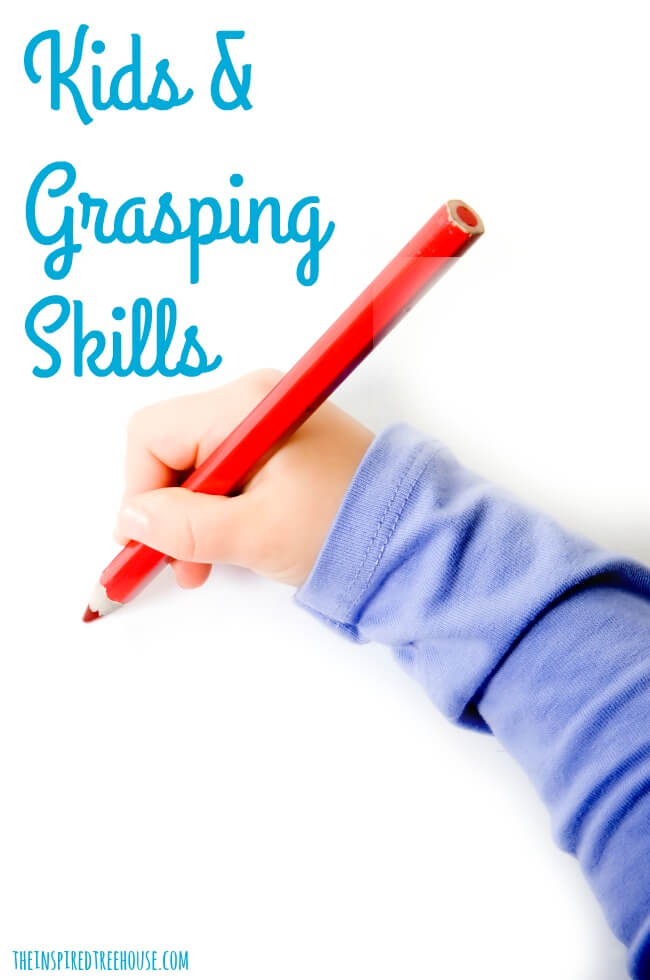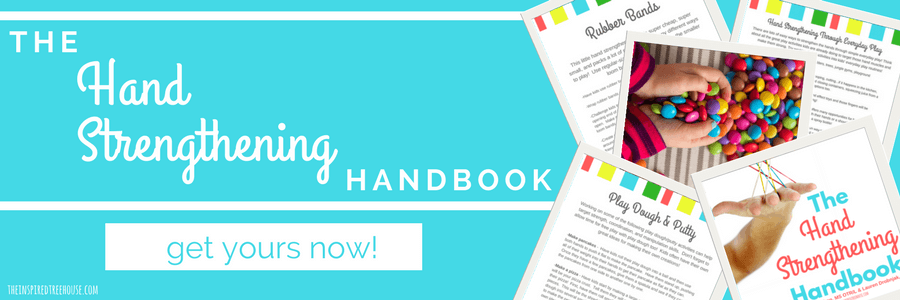Learn more about how to promote grasping skills for kids!
Grasp Patterns
There are two sides to every hand, a power side and a precision side. A power grasp uses all of the fingers and the thumb together to hold something using counter pressure. This takes strength. Some examples of using a power grasp include holding onto monkey bars, pounding with a toy hammer, or playing tug of war with a rope.
A precision grasp uses only three fingers that are known for control and coordinating small movements of the hand. These fingers are the thumb, first, and middle fingers…or, as we call them at The Inspired Treehouse, “Super Fingers!” Some examples of how a child uses a precision grasp include grasping a pencil, using scissors, holding a spoon, and buttoning buttons on a shirt. As children grow and become more independent they use this grasp all day long.
How to Promote Strong Grasping Skills
Talking to kids about their “Super Fingers” is a fun, interactive way for children to learn to use a precision grasp. We teach kids that these three fingers are the strongest fingers on the hand. Once they’re familiar with the term, whenever we call out “Super Fingers” during an activity, the children begin to automatically switch over to using their thumb, first, and middle fingers for the task rather than using a less efficient grasping patterns. We often have kids hold up their “Super Fingers” in the air before an activity to remind themselves of the super three.
Little hands need reinforcement to develop a strong precision grasp. There are many activities that can help strengthen the “Super Fingers.” Here are just a few to get you started….
Activities to Promote Grasping Skills
1 || Playing with a squirt bottle
2 || Milking a Cow – Has your little one ever gotten to milk a cow? Let her try with this imaginative activity that targets hand strength.
3 || Popping bubble wrap
4 || Playing with playdoh (rolling big/little balls, poking holes with fingers, pulling apart)
5 || Tearing paper for crafts
6 || Baby Bumblebee – A great workout for little hands, this fun song and movement activity will have your little bees buzzing all over the place!
7 || Play with clothespins or tweezers to pick up items
8 || Board games such as Operation, memory (flipping cards), Bed
Bugs, etc. There are many games that use small manipulatives that can enhance hand strength and coordination.
9 || Sparkly Sensory Starfish – Kids will put their Super Fingers to the test with this fun ocean-themed activity as they sprinkle decorations on to make a one-of-a-kind starfish!
10 || Stringing beads
11 || Putting pennies into a piggy bank
12 || Feed the Elephant – Part of our circus theme, this activity will not only encourage grasp and fine motor coordination, but lots of giggles too!
13 || Personalized Caterpillars – A great multi-tasker, this craft gets kids working on fine motor strength AND learning how to sequence the letters of their names!
7 Simple Toys for Promoting Efficient Grasp Patterns

2 || Tweezers
3 || Squeeze Balls
4 || Clothespins
5 || Pegs and Pegboards
6 || Theraputty
7 || Pop Beads





[…] to build their “snow”cicle. Show each child how to break apart a cotton ball using their Super Fingers until it is large and fluffy. Hook the first fluffy cottonball over the doorknob for each […]